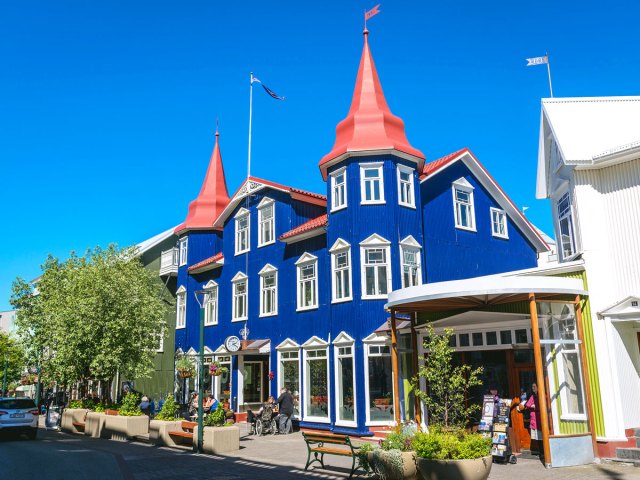Since the very first world’s fair, the Great Exhibition of 1851, more than 100 world’s fairs have been held in 20 countries in the decades since. The landmark building constructed to host the first event in London — a 990,000-square-foot exhibition hall built of iron rods and panels of glass called the Crystal Palace — is sadly no longer standing today. But many other incredible structures remain, such as the Eiffel Tower in Paris and the Atomium in Brussels. You may already be familiar these seven U.S. sites, but did you know they were originally landmarks built for world’s fairs?
Sunsphere – Knoxville, Tennessee
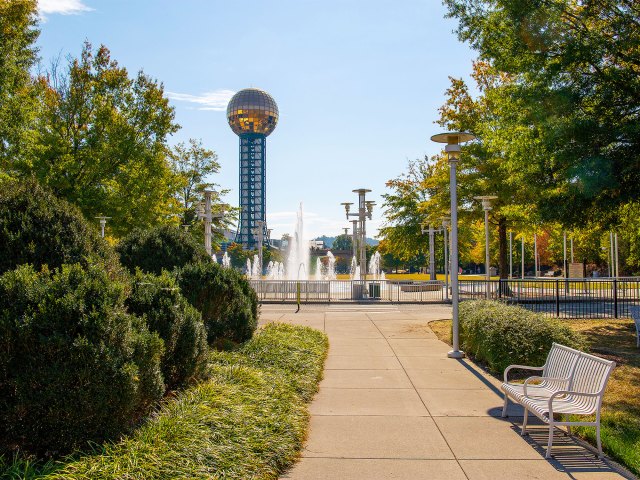
Knoxville wanted to do something truly special for the 1982 World’s Fair. So, they built the Sunsphere, a 26-story observation tower with a globe made out of gold on top. The theme for the fair was “Energy Turns the World,” and Knoxville decided to showcase solar energy by making this replica of the sun. The 24-karat gold panels are actually glass layered with gold dust. After the fair, the observation tower — including the sun-themed cafe inside — closed and sat dormant for years. The tower finally returned to use following a failed reopening attempt in 1999 and a 2014 renovation. Across the street from the Sunsphere is an amphitheater, the only other remaining structure from Knoxville’s fair.
Space Needle – Seattle, Washington

An unmistakable feature of Seattle’s skyline, the Space Needle was built in 1962 for the Century 21 Exhibition, a world’s fair focusing on the space age. And the initial drawings for the Space Needle’s design reflected that: Co-architects Edward E. Carlson and John Graham, Jr., imagined a huge tethered balloon and a UFO when dreaming up the new building. The final design is a combination of their two ideas.
The Space Needle’s location and construction was determined by a few factors: The 605-foot-tall tower needed to be away from other tall buildings in order to make the biggest impact and have the best view, and because Seattle is located in an earthquake-prone zone, it needed to be able to survive a 9.1-magnitude earthquake and wind gusts up to 200 mph. Visitors today should stroll around the Seattle Center grounds surrounding the Space Needle — the entire complex was built for the world’s fair. The Needle itself, however, is actually private property, owned by the family of one of the architects.
Museum of Science and Industry – Chicago, Illinois

The stunning, Beaux Arts-style Museum of Science and Industry is the only building from the 1893 World’s Columbian Exposition that remains where it was in the year the fair was held. It’s also one of only two remaining buildings overall; the other is a ticket booth that was moved off-site. The museum building in Chicago’s Hyde Park neighborhood was originally the Palace of Fine Arts, and like every other structure built for the fair, it wasn’t meant to last. The walls were built with staff material, a mixture of hemp fiber, glue, and plaster of Paris. However, the inside of the building gave it staying power. Since it housed priceless artworks during the fair, it needed to be fireproof, meaning it had an interior layer of brick and steel.
The building was renovated again in the 1920s to solidify the exterior as a permanent museum. When Chicago’s second world’s fair, Century of Progress, rolled around in 1933, the Museum of Science and Industry officially opened for business. Today it’s the largest science museum in the Western Hemisphere.
St. Louis Zoo Aviary – St. Louis, Missouri

For the Louisiana Purchase Exposition, which opened in 1904 in St. Louis’ Forest Park, the Smithsonian Institution constructed a giant cage called the Flight Cage. The massive walk-through aviary showcased different flocks of birds and was the largest aviary in the world at the time — double the length of a basketball court, 50 feet tall, and housing about 1,000 birds.
When the Smithsonian tried to dismantle it after the fair — most of the buildings and construction were temporary — St. Louis residents fought against it and the city bought the cage for $3,500 (without the birds). The city’s parks commissioner bought ducks and geese to keep in the aviary, then put up several temporary exhibit spaces to house the animals left from the closure of a local zoo in 1891. By 1916, the St. Louis Zoo had begun to grow around the aviary — it’s now one of the largest in the country.
Treasure Island – San Francisco, California
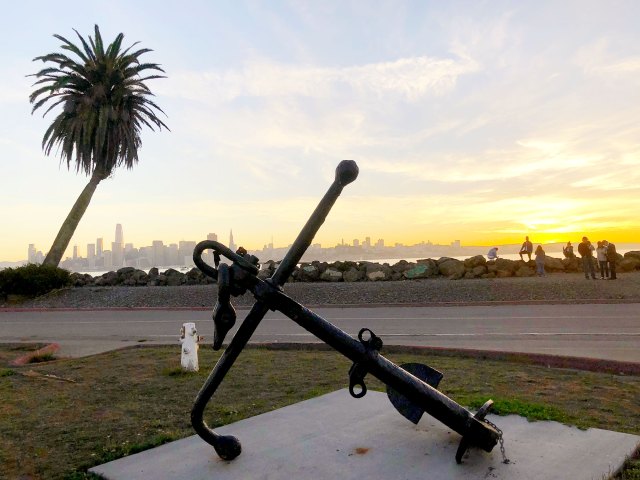
After the Bay Bridge and the Golden Gate Bridge were completed, San Francisco wanted to have a festival to celebrate. The city built an island two miles into the bay and invited countries from all over the world to bring exhibits. The resulting celebration was the third and last world’s fair held in San Francisco: the 1939-1940 Golden Gate International Exposition. The fairgrounds covered the entirety of Treasure Island, which was built with mud pulled up from the bay and named after the possibility that the soil might have gold in it. Fair buildings were lit up so brightly that the glow could be seen from a hundred miles away, earning the island the nickname “The Magic City.” Treasure Island is now a city neighborhood with a museum dedicated to the island’s construction and history.
Unisphere – New York, New York
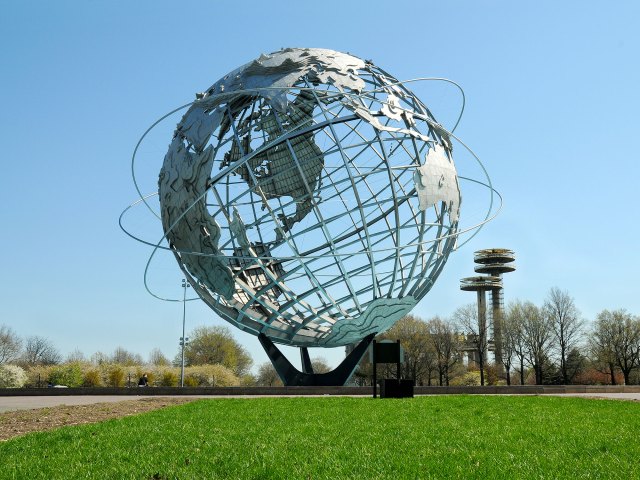
In Flushing Meadows-Corona Park in Queens, New York, visitors will see a 120-foot-wide, 140-foot-high stainless steel globe, with solid continent panels, latitude and longitude beams, and three rings surrounding it. The globe, called the Unisphere, was a centerpiece of the 1964 World’s Fair and surrounded at the time by pavilions and exhibitions. (Today it’s surrounded by a pool and fountains.)
Landscape architect Gilmore Clarke designed the structure with a sketch on the back of an envelope. When it was built, the design had to compensate for how top-heavy it would be because of the continent pieces; an early computer helped calculate and plan out the balancing act. At one time, capital cities dotting the globe were lit up with bulbs. The three rings around the globe also have significance: They represent the orbits of astronaut John Glenn, cosmonaut Yuri Gagarin, and the first communications satellite, Telstar.
Tower of the Americas – San Antonio, Texas
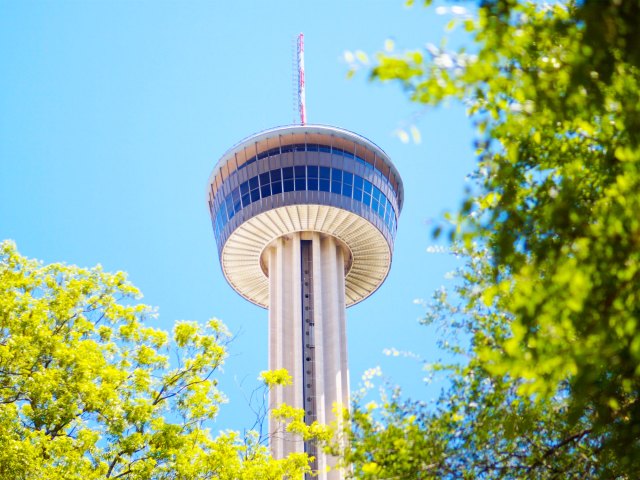
It’s hard to miss the Tower of the Americas in San Antonio. Rising 750 feet above the skyline, the tourist attraction has a revolving restaurant, an observation deck (the tallest in Texas), and a 4-D theater. The building has come a long way since it was first built in 1968 for the HemisFair World’s Fair. The fair was timed for San Antonio’s 250th anniversary and lasted six months — but the city had to displace residents and raze homes to clear the downtown space it wanted for the fairgrounds. After they were built, the fair drew 6.4 million visitors from around the world to celebrate the theme “Confluence of Civilizations in the Americas.” The tower itself was the fair’s centerpiece — it weighs a whopping 80 million pounds, though the rotating tower needs an engine with only a single horsepower to turn it.
More from our network
Daily Passport is part of Optimism, which publishes content that uplifts, informs, and inspires.











